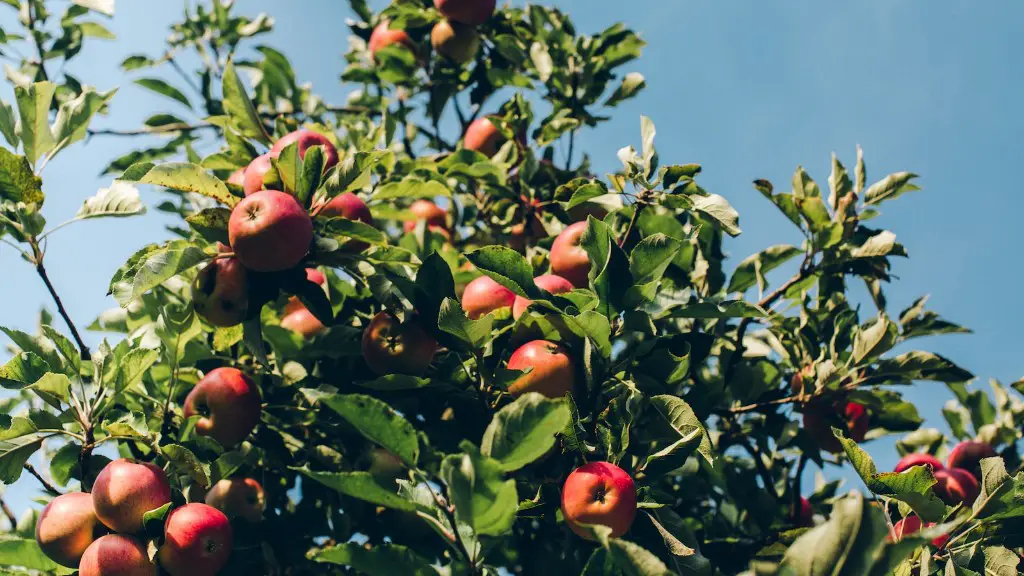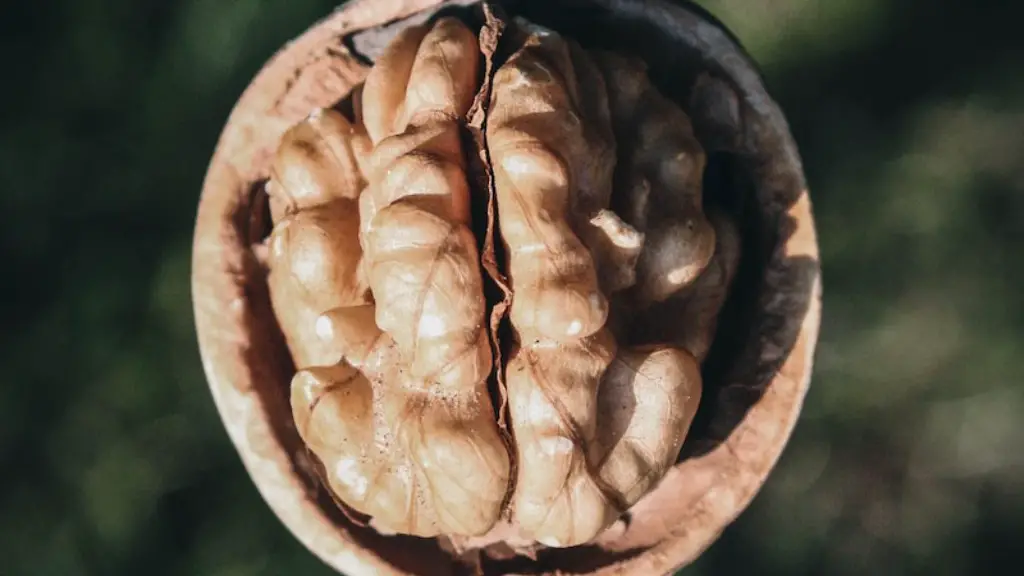Contrary to popular belief, there is more to why apples might be going rotten on the tree than just natural causes. In many cases, an apple’s condition can be caused by several environmental and biological factors. A proper understanding of these factors can help to prevent and better manage any potential issues.
An important factor to consider is the weather conditions. If the temperature drops too low or exceeds the optimal range, the apple tree can become susceptible to a greater number of issues. Apples are highly responsive to water and humidity levels as well, and too much or too little can cause them to ripen too quickly. In addition, certain diseases and pests can take hold when the weather conditions are right, accelerating the rotting process.
The environment of the tree is also crucial. The tree needs adequate sunlight, water, and ventilation to reach its full potential. If any of those are lacking, it can cause the apples to become more vulnerable to premature degradation. Poor drainage, uneven soil, and an accumulation of fertilizer can also contribute to rotting apples on the tree.
Finally, it is essential to pay close attention to the health of the tree itself. Over-fertilization, incorrect pruning techniques, pest infestations, and even mechanical damage can all cause serious repercussions that can threaten the quality and health of the tree’s fruit. Any of these issues can weaken the fruit, making it more susceptible to rot.
Soil Health
The quality of the soil in which an apple tree is planted can have a major impact on the fruit it produces. An ideal soil is usually well-draining, nutrient-rich, and balanced in pH. If the soil is contaminated with pesticides or other toxic products, this will also put the apples at risk. Compacted or dense soil that doesn’t allow roots to easily absorb nutrients and water will also harm tree development.
Towards this end, proper soil management is essential to maintaining the health of the tree. Regularly removing weeds and any debris around the base of the tree allows for better personal inspection of the soil conditions. Depending on the situation, aeration, compost amendment, and fertilizer can all be beneficial to improve the soil.
In addition, it is important to monitor the soil pH levels. Apples generally prefer soils with a pH of 4.0-7.0. If it is outside of this range, they can quickly become over-saturated or unable to absorb the necessary nutrients and water in order to grow. When this happens, the apples are left more vulnerable to issues like rot.
Pest Management
Naturally, pest infestations can be a major cause of concern when dealing with rotting apples on the tree. Managing pests is also crucial for general tree health and for preventing the spread of disease. Inspecting trees for any signs of infestations is beneficial in catching any potential issues early on.
When pests are discovered, it is best to contact a professional pest-management specialist to help make sure the tree is treated correctly. Experts have access to a variety of treatments, such as pruning and spraying, that can quickly and effectively clear an infestation prior to any serious damage. It is also beneficial to take advantage of any natural methods, such as introducing beneficial insects or using traps, if suitable.
In addition, a tree should be inspected for insect eggs. Many pests, such as moths and aphids, lay eggs on leaves, which can then hatch and spread the infestation. Checking trees on a regular basis and using a magnifying glass can help spot any eggs before they hatch and go on to infect the fruit.
Regular maintenance can also help to keep pests at bay. Pruning off dead and dying branches can reduce entry points for pests as well as help redirect growth to more healthy sections of the tree. In addition, keeping the tree clean and free from debris can minimize potential nesting areas, as well as provide an overall healthier growing environment.
Fungal and Bacterial Issues
Fungal and bacterial diseases can also lead to apple tree issues. Such infections can be caused by climatic conditions, infestation, or even improper agricultural practices. While some of these diseases can be managed using fungicides, prevention is key to keeping any potential issues at bay.
Maintaining tree health through proper pruning, fertilization, and other care methods is one way to reduce the chances of any serious diseases taking hold. Inspecting trees regularly can help to identify any signs of infection or decay early on, allowing for quick and effective management. This can help to ensure that any issues are properly taken care of prior to a mutation taking hold.
Finally, using organic methods, such as introducing beneficial insects or utilizing all-natural sprays, can be beneficial, as these methods are proven to be more effective in controlling such diseases than other methods. Contacting a specialist for additional advice and guidance is also advantageous.
Harvesting and Storage
Periodic fruit harvesting is essential for good tree health and should be done in a timely manner. In addition, good harvesting and storage practices can help to keep apples from rotting prematurely. At the time of harvesting, any bruised or damaged fruits should be removed, as these will likely rot soon after.
When storing apples, it is best to keep them dry, cool, and as far away from ethylene-emitting fruits as possible. Wrapping the fruit individually or placing it in plastic bags can be beneficial in preventing moisture loss and preserving quality. Taking adequate steps towards proper storage and harvesting can help to ensure that apples are kept in top shape until they are ready to be consumed.
Regular Care
Ultimately, it is important to provide regular and consistent care to a tree in order to ensure that it remains healthy. Pruning should be done periodically, as this encourages new growth and improved flowering. Proper fertilization and watering are also helpful in maintaining good apple quality. In addition, removing any fallen apples from the ground near the tree can help to prevent spread of disease and insect infestations.
In conclusion, in order for an apple tree to produce good fruit, it is important to understand the various factors that can contribute to premature rotting. Paying attention to the weather conditions, inspecting for pests and fungal issues, and taking proper measures for harvesting and storage are essential for preventing and managing any potential issues. With a little bit of care and maintenance, apples can be grown to their fullest potential.



